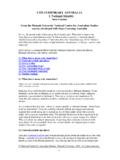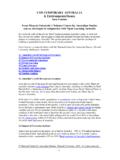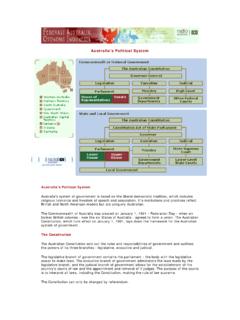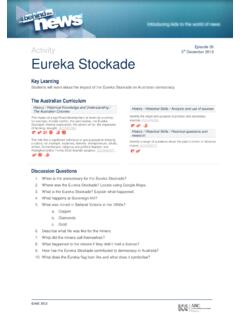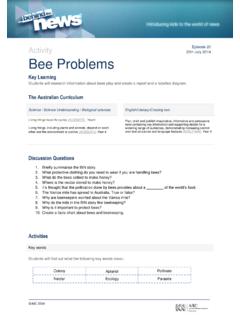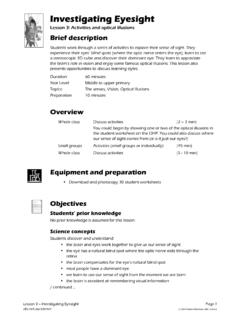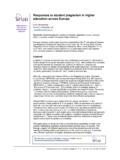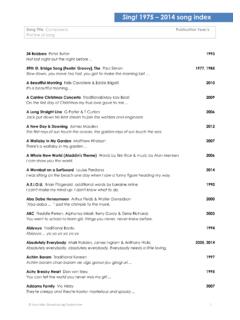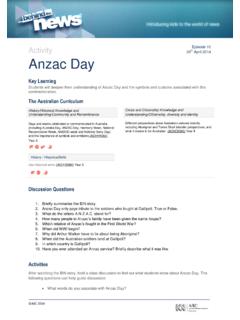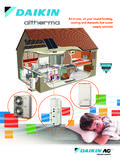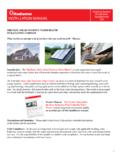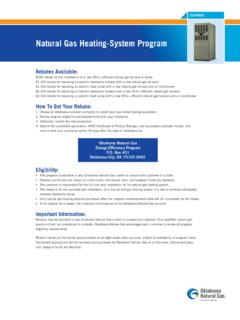Transcription of Heating and cooling - ABC
1 Heating and cooling | | Carbon Cops : Heating and coolingHeating and cooling your home can be one of the biggest users of energy. Efficency in this area can bring great savings. Heating and cooling depend on many contributing factors. The type of Heating and cooling you choose, the design of your home , the spaces that can be closed off, the amount of glass, draughts, orientation of the house, floor coverings, most efficient and cost effective way to heat a home is to use one or more space heaters or a zoned central Heating natural gas buying a Heating system, carefully consider your household needs. There are a range of Heating systems and fuel sources with different purchase and running costs and energy efficiency levels.
2 Consider factors such as:the size and function of the space to be heated how many people use the space how often you expect to use the space cost of purchase and ongoing maintenance energy efficiency requirementsWhere you live how many days of the year are you likely to need Heating ?Choose heaters with:the highest energy star rating (the more stars the more efficient and the less it will cost to run)a system that can be zoned to only heat the rooms being usedthermostat controlsprogrammable timersOnce you have warmed your home it s important not to lose that heat or re-heat it too is the top way to increase thermal comfort in a home in most Australian climates. There are several kinds of insulation, made of different materials.
3 Regardless of what they re made of, their effect can be easily compared by the R R value is a measure of how much a piece of insulation resists heat transfer. The higher the value, the longer it takes heat to cross the insulation barrier so the higher, the better. The R value depends on the thickness of the insulation as well as the material it s made of, so a polyester batt that s thick will have a higher R value than a polyester batt that s thin. More technically, the R value is measured in metres squared per degree of temperature difference (between the two sides of the insulation) per watt of heat flow across the material. It s the exact inverse of the U value, which is most often used for measuring how much heat transfers through windows and similar.
4 The U value describes how many watts of heat transfer through one square metre of a specified thickness of material for every degree of temperature difference between the two building codes now specify minimum insulation levels for new houses. Quick facts on insulation:Insulation is the single most effective item you can add to your home to improve its energy | | Carbon Cops : Heating and coolingInstalling or topping up insulation in ceilings can save a household over one tonne of carbon each every square metre of floor space, an uninsulated house like this one needs 130W of Heating . Ceiling insulation reduces the power needed for Heating to 100W per square metre, saving them almost a quarter of the power.
5 A well insulated, energy efficient home will keep your home up to 10 C cooler in summer and 5 C warmer in winter. Insulating a home can save 45-55% of Heating and cooling energyUninsulated ceilings, walls and floors can account for 70% of total heat loss from a home technical manual on insulation Victoria on insulation massThermal mass refers to the amount of material present that is able to absorb and retain heat. Metals transfer heat quickly even though they re heavy, so they count for less thermal mass. Plastics can absorb heat, but they re light weight, with little mass to them. Stone, brick, concrete, earth, sand and water are all substances that tend to provide high thermal mass.
6 This is why towns by the ocean have less daily variation in temperature than towns inland the ocean acts as a general, houses in hot climates are better with less thermal mass, so they can cool down more quickly overnight. Houses in regions where the temperature goes through big daily variations are better with more thermal mass, to slow the temperature change inside down and keep from either Heating or cooling too much. Houses in cool climates can benefit from additional thermal mass in the right places, to maintain warmer conditions inside overnight, but this can also mean they take longer to warm up stud wall has very little thermal mass, so it heats up quickly and cools down quickly it s very environmentally responsive.
7 In contrast, a brick wall absorbs a lot of heat before any gets passed through, meaning the inside of the house stays cool for longer. And after the sun s stopped Heating the wall, it will continue to slowly release heat over a long period, meaning the inside of the house stays warmer at can retrofit thermal mass in several ways:Move books and bookshelves into the room books are quite heavy for their sizePlace bricks or concrete blocks along the wall Put some large sealed containers of water in the roomCreate a Trombe-Michel wall near the windows, using bricks, sealed water containers such as wine or beer bottles, or containers of damp home thermal mass Sustainability Victoria thermal mass Draught proofingDraughts and air leaks in a house increase the amount of air that needs to be heated and cooled.
8 Sealing draughts is cheap and simple. Draught proofing typically earns its cost back within two or three | | Carbon Cops : Heating and coolingIdeally, the air in a house should change, once every two hours at normal atmospheric pressure to stay sufficiently fresh. Australian houses are typically very leaky. This means they heat or cool two or three times the amount of air they need to. Common sources of air leaks include exhaust fans that don t self-seal, recessed light fittings (particularly gimball fittings for halogens), gaps between floorboards, gaps around plumbing pipes, windows and door frames. Even power points and light switches will often contribute tiny air leaks.
9 Ironically, wall-mounted air conditioners can be a large leak as movement Temperature of your heatingIdeally set your winter Heating to between 17 19 degrees. Every degree above that will cost you an extra 10 per cent on Heating bills .Use the timer on your Heating and turn it off when you leave the your Heating . Modern systems have a way for you to zone your Heating . The living areas are generally set to a little warmer than the bedrooms. Zoning can also be achieved with older systems by half closing the vents in the bedrooms and leaving them fully open in the main living doors. Smaller spaces heat more quickly than larger spaces. Keeping door closed and areas separated increase the efficiency of Heating and you don t pay to heat areas you are not of radiant heat 30% of wall mounted radiator s heat is lost through the walls and if the units are placed on an external wall that heat is lost to outside.
10 But it is possible to reflect radiant heat, just like light, so putting reflective panels behind wall mounted radiators can increase efficiency of the system and outside temperatures An indoor-outdoor thermometer is a cheap way to save on energy bills. It can tell you the best time to open or close up your the aim is to keep cool, the house should be shut up once the temperature outside starts warming up in the morning curtains pulled, windows and doors closed. In the afternoon, don t re-open the house until the temperature outside falls lower than the temperature inside. As soon as it drops below, opening the house will help it lose any extra heat it s the aim is to keep warm, the reverse applies have your home open during the day to take advantage of the sun s heat and light, but close it up as soon as the temperature outside drops lower than inside, to conserve your heat.
